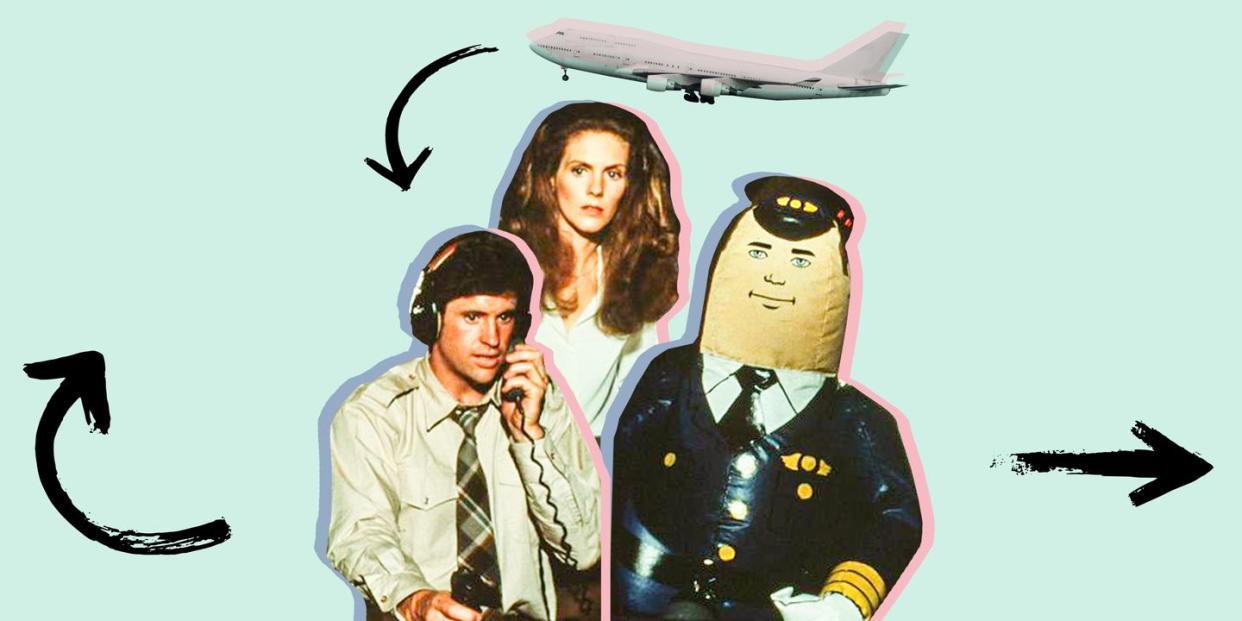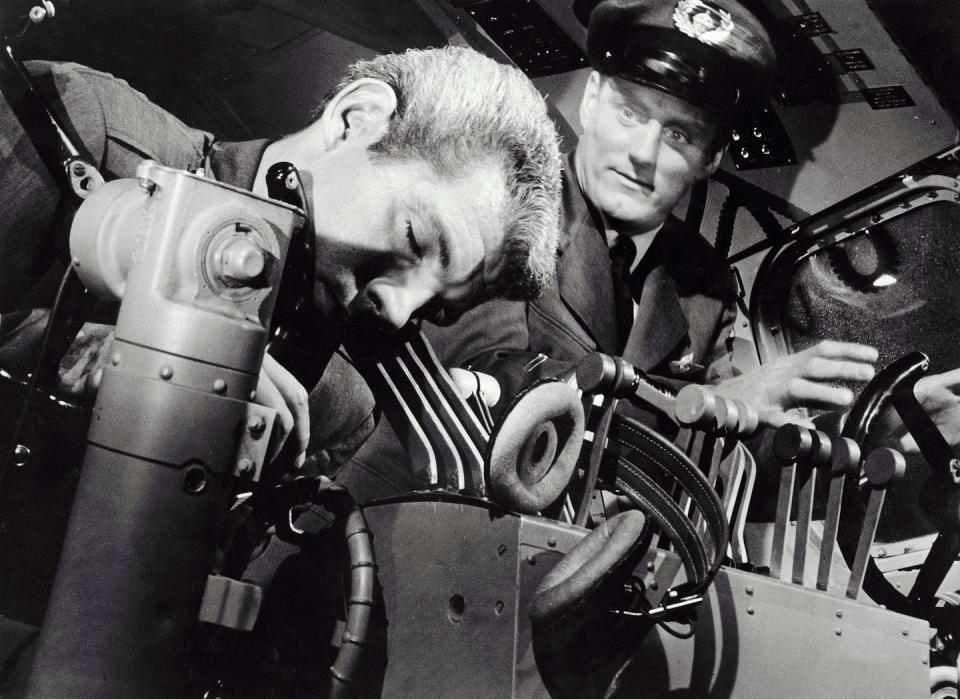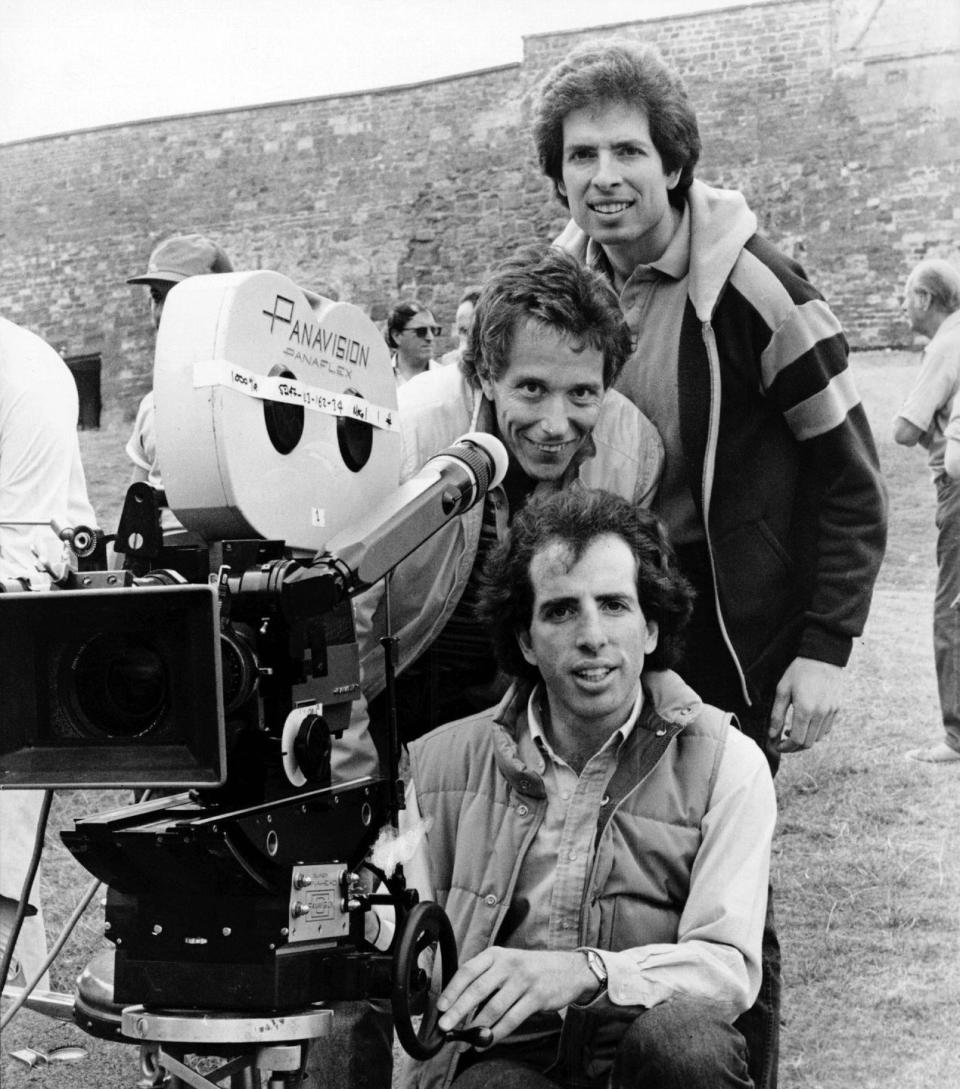'Airplane!' Is Considered One of the Best Comedies of All Time. But 40 Years Ago No One Saw it Coming.

Forty years ago, the summer movie season looked like a very different beast than the one we know today. Night and day, really. Back in 1980, as Memorial Day approached, there was only a small handful of sequels on the release schedule, but they were mainly of the Smokey and the Bandit and Cheech and Chong variety. Sure, the can’t-miss blockbuster, The Empire Strikes Back, was on the calendar, too. But the very idea of superhero movies didn’t exist yet, unless you counted the lone exception of Christopher Reeve’s Superman II. In other words, it was a better and simpler time when celluloid comedies still had a fighter’s chance in the warm-weather marketplace. And heading into that long, hot summer four decades past, there were only two big-studio comedies that anyone was buzzing about. Neither one of them was Airplane!
After the hand-over-fist box-office success of National Lampoon’s Animal House in July of 1978, summer quickly became the playing field where Hollywood would plant its funny flag. Made for just $2.7 million, the rude and crude snobs-vs-slobs frat-house comedy directed by John Landis and starring Saturday Night Live’s John Belushi would rack up more than $140 million, blowing past Mel Brooks’ Blazing Saddles as the highest-grossing comedy of all time. Overnight, everyone in Burbank and Culver City wanted to be in business with the creative team behind the out-of-nowhere hit.
But rather than sticking together for an encore, the Animal House brain trust split into two camps, with Landis and Belushi heading off to Chicago make The Blues Brothers, while co-writers Harold Ramis and Doug Kenney went off to Florida make the anarchic country-club satire, Caddyshack. During their chaotic productions, the two films were competitive about everything, from which of the two would come out on top at the box office to which cast and crew could hoover up more cocaine. Unbeknownst to either of them, there was a third comedy lined up to come out in the summer of 1980—an absurdly tiny (and just plain absurd) barrage of slapstick from Paramount that was flying under everyone’s radar.
Airplane! grew out of the childhood friendship between three men named David Zucker, Jim Abrahams, and Jerry Zucker (a creative team later re-christened “ZAZ” after the initials of their last names). In 1971, while attending the University of Wisconsin in Madison, the trio had created a sketch comedy troupe called The Kentucky Fried Theater. They were also obsessed with old movies—the cheesier the better—often getting together to watch them with the sound off as they ad-libbed their own nonsensical dialogue, sort of like a prototype of Mystery Science Theater 3000. One of those movies was Zero Hour!, a preposterously straight-faced 1957 B-movie starring Dana Andrews and Sterling Hayden. The plot, such as it was, revolved around a commercial flight in which the plane’s pilots and passengers suffered food poisoning, forcing an ex-WWII fighter pilot to step into the cockpit and land the airliner in heavy fog. Immediately, they realized that the idea was ripe for parody.
However, before Abrahams and the Zucker brothers would turn Zero Hour! into both the blueprint and scaffolding for Airplane!, they needed some hands-on experience in the movie business. So, in 1977, they wrote and produced an independently financed, buckshot collection of off-kilter sophomoric gags and drive-by film parodies called The Kentucky Fried Movie. Since none of them had any clue how to direct, they turned to a 26-year-old high school dropout named John Landis, whose only credit behind the camera had been a $60,000 cheapie about a guy in a gorilla suit appropriately titled Shlock. The Kentucky Fried Movie hasn’t aged particularly well. Too many people have since executed the idea far better. Still, its collection of throw-everything-at-the-wall gags and film-within-a-film spoofs (a faux chopsocky epic called A Fistful of Yen, for example) would become the model for their follow-up—a film that they were determined to control and direct themselves this time around.
Abrahams and the Zuckers holed up and watched and re-watched Zero Hour! until their eyes glazed over. They would pause their VCR after each scene and then translate it into their absurdist patois, giving it what would become their signature topspin. Not surprisingly, when they were finished with their Airplane! screenplay, no one in Hollywood was interested. That is, until Michael Eisner, then the head of Paramount, read it. He saw potential…and with a bargain-basement $3.5 million pricetag, he also saw little downside. He decided to roll the dice.

The ZAZ boys knew that if the film was going to work, they needed to fill its cast with non-comic actors—performers who could deliver absurd one-liners with deadpan conviction and no winking toward the audience. The humor lived and died by the disconnect between those two extremes, not to mention its bottomless quiver of verbal and visual puns. The first name on their list was Robert Stack (who would play Captain Rex Kramer). Stack, who had played Eliot Ness on the TV version of The Untouchables from 1959 to 1963, seemed to understand what the filmmakers were up to, and he was tickled by it. But he also wanted to know who else would be in the picture before committing.
Although the part had been written for David Letterman, Robert Hays would ultimately beat out Bruce Jenner for the lead role of psychologically scarred combat pilot Ted Striker. Meanwhile, Julie Hagerty edged out Sigourney Weaver and future Cheers star Shelley Long as Striker’s stewardess flame, Elaine. Shortly thereafter in rapid succession, the stone-faced veteran troika of Lloyd Bridges, Leslie Nielsen, and Peter Graves all signed on, too—some with more reservations than others. According to Jerry Zucker, when Graves first read the script, he threw it in the trash, thinking that his pilot character, Captain Oveur, who asks a young boy whether he’s ever seen a grown man naked and if likes gladiator films, came off like a pedophile. Eventually, his wife and daughter made him see the light. As for the first-time directors, their only instruction to their cast before they yelled “Action” was: “Pretend you don’t know you’re in a comedy.”

Leslie Nielsen, who had landed the role of Dr. Rumack only after both Vincent Price and Dragnet’s Jack Webb passed, had been toiling in relative obscurity since the early ‘50s in TV Westerns and crime shows. More than anyone, he took to the ZAZ process like a natural (he would later reteam with the filmmakers for Police Squad! and the Naked Gun movies). But according to Abrahams and the Zuckers, Nielsen had always had a goofier side that was never given the opportunity to come out on screen. In fact, for years, Nielsen had carried around a pocket-sized whoopee cushion which he would deploy in crowded elevators. His costar Robert Hays would say that Nielsen “played that thing like a maestro.” Delivering a line like “Don’t call me Shirley” with hilarious seriousness came easier to him than anyone would ever know.
But now let’s return to that summer 40 years ago. After going weeks over schedule and soaring millions over budget (thanks in part to John Belushi’s spiraling cocaine habit), Universal’s eagerly awaited The Blues Brothers finally opened on June 20. The reviews were lukewarm. Beloved as it may now be for some, at the time it quickly became clear to both the studio and Landis that their film would not be another Animal House. A month and change later, Orion and Warner Bros.’ Caddyshack would endure a similar fate: harsh reviews; underwhelming box office; disappointed financiers. Instead, it was Airplane!, the little movie that no one was tracking and fewer saw coming, that became an immediate sleeper sensation the moment it hit theaters on July 2, 1980.
In The Chicago Sun-Times, critic Roger Ebert wrote, “Airplane! is sophomoric, obvious, predictable, corny, and quite often very funny. And the reason it’s funny is frequently because it’s sophomoric, obvious, corny, etc.” And even the relatively august New York Times saw the slapstick light, with critic Janet Maslin weighing in: “As a remedy for the bloated self-importance of too many other current efforts, it’s just what the doctor ordered.” She omitted whether that doctor was, in fact, Leslie Nielsen’s Dr. Rumack or whether he’d ordered the steak or the fish.
Airplane! would earn back its modest $3.5 million budget in its first five days in wide release. And as the summer of 1980 went on, it snowballed into a word-of-mouth hit, eventually pulling in $83 million domestically and ultimately becoming the fourth-highest grossing movie of the year behind only The Empire Strikes Back, 9 to 5, and the Richard Pryor-Gene Wilder ex-con caper Stir Crazy. It also became the unlikeliest of awards contenders. Not with the Oscars, maybe. But the Writers Guild of America would give Abrahams and the Zucker brothers its Best Adapted Comedy honor. Why adapted? Well, the ZAZ boys had lifted so much from Zero Hour! (down to the exclamation point in its title!) that even the most original movie of the year couldn’t lay claim to complete originality.
Forty years later, Airplane! now resides in some very classy company on the Library of Congress Film Registry. Something that shouldn’t come as too much of a surprise to anyone who can quote large stretches of the film’s indelible dialogue. It also manages to hold up amazingly well—certainly a lot better than most comedies from the Carter and Reagan era. The reason for that longevity may be because, aside from still being ridiculously funny, it’s the rare Hollywood comedy that doesn’t rely on quickly-dated pop culture references for its humor. It’s both of its time and of no time. More than anything, it’s a satire of a certain style of acting—a wooden earnestness that will always come with a bullseye pinned on its back. After all, as long as there are actors—whether they’re A-list stars or bit players—who take themselves too seriously, puncturing and deflating them will never go out of style. Like Airplane! itself, it’s timeless.
You Might Also Like

